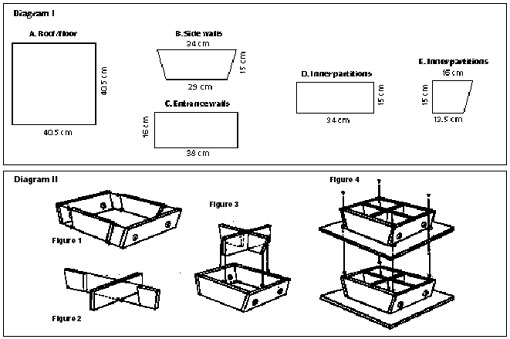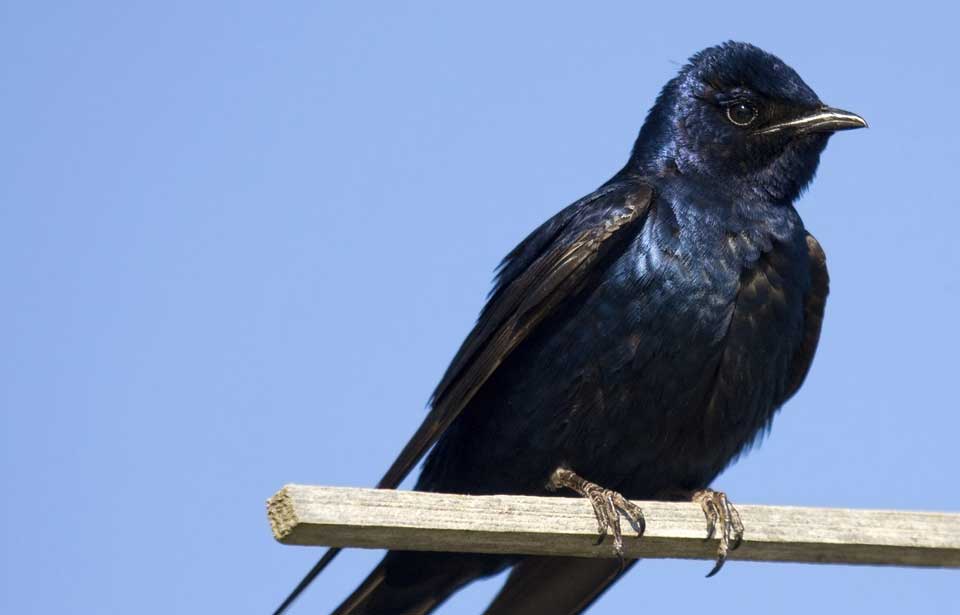Condominium living isn’t for every bird, but purple martins like it just fine. These winged acrobats, known for their gentle manner and healthy appetite for bugs, will return to the same multiunit nesting structure each year.
- Maximize your chances of success by locating your purple martin dwelling near open water, in an area already occupied by the birds. Install it at least 9 m away from trees, so the martins can swoop down to the entrance holes from all sides.
- Use 3/4” plywood for inside partitions and outside walls. Use 1/2” plywood for the roof and floor sections.
- See Diagram I for the basic components and measurements of a three-level dwelling.
- Cut four of section A to make a roof and three floors. Cut six each of sections B, C, and E for walls and partitions. Cut three of section D.
- Drill a few small ventilation holes near the upper edge of each B piece.
- Cut two entrance holes 5.5 cm diameter in each C piece. The holes should be 2.5 cm from the bottom edge. One hole should be about 5 cm from the left edge and the other 5 cm from the right edge.
- Diagram II shows how to put the structure together. Use 4 cm coated flat-head screws. They’ll allow you to open the structure for maintenance. Assemble each level separately, beginning with sections B and C, as shown in Figure 1.
- Put the inside partitions together by screwing one section E on either side of section D, as shown in Figure 2.
- Screw these inner partitions to the outside walls, as in Figure 3.
- Screw the unit to a floor section to complete one level of the structure. Assemble the other two levels, stacking and joining them with screws, as in Figure 4. Finish with the roof.
- Paint the house white, but only on the outside.
- Screw a large pipe flange on to the bottom and mount the structure on a galvanized pipe 3 m above the ground.
- Be sure to cover the entrances until martins appear in spring. Otherwise, sparrows or starlings may take over the dwelling.
- Clean and maintain the structure at the end of each nesting season.




